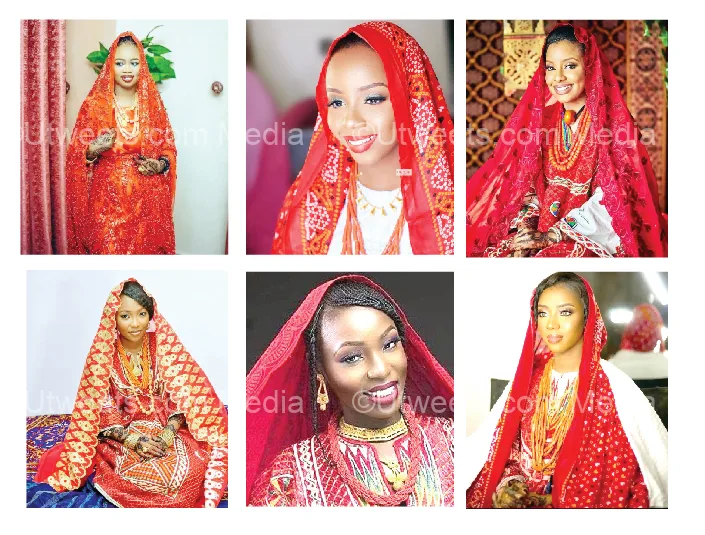Nestled in northeastern Nigeria, the city of Maiduguri, Borno State’s capital, is home to the Kauri people, an ethnic group celebrated for their vibrant culture, rich heritage, and, most notably, their distinctive traditional attire. Rooted in centuries-old customs, Kauri clothing showcases the community’s profound connection to their environment, beliefs, and artistic expressions. ...Tap To Read The Full Story Here | ..Tap To Read The Full Story Here...
Cultural Significance |Viral Video of Pastor Daughter Mistakenly Send Her Pr!vate Video Meant For Her bf To Church WhatsApp Choir Group|
The Kauri people, primarily residing around Maiduguri, have a history deeply influenced by the Kanem-Bornu Empire and neighboring Hausa and Fulani cultures. Their clothing traditions have evolved over generations but retain unique qualities that reflect the people’s identity, values, and resilience. Traditionally, Kauri attire was crafted with locally sourced materials, especially cotton and leather, and adorned with dyes and embellishments like shells and beads, each symbolizing specific aspects of their culture and social structure.
Traditional attire remains essential to ceremonies, rites of passage, and community gatherings, representing both personal and communal identity.
Components Of Kauri Traditional Attire
The Zanna Robe (Tunfa):
For Kauri men, the Zanna robe, also known as the Tunfa, is an integral part of their traditional wear. This long, flowing gown is typically made from fine, handwoven cotton and often dyed using natural indigo or black dyes. The Zanna robe is embellished with intricate embroidery, primarily around the neckline and cuffs, a skill passed down through generations.
The robes may vary in color and intricacy depending on the wearer’s status or the occasion. For ceremonies and formal gatherings, these robes become even more elaborate, symbolizing the wearer’s respect for tradition.
The Shash and Kufi:
Complementing the robe, Kauri men wear a headwrap known as the Shash or a finely embroidered cap called the Kufi. Both items serve not only as fashion statements but as symbols of respect and wisdom, especially among older men. The colors and style of the Kufi or Shash may represent the wearer’s lineage, social rank, or marital status.
The Kaftan and Wrapper for Women:
Kauri women traditionally wear a flowing garment similar to a Kaftan, called the Daga, along with a matching wrapper, known as the Zani. Made from lightweight cotton or silk fabrics, the women’s attire is often dyed in bright colors such as indigo, green, and yellow.
Traditional dyeing techniques, like those used in batik or tie-dye, are popular for women’s clothing and represent the Kauri people’s connection to natural aesthetics. Adire fabric (a tie-dye fabric originating from the Yoruba) is sometimes incorporated as a nod to Nigeria’s broader textile heritage.
Embellishments with Cowrie Shells and Beads:
Cowrie shells are an integral part of the Kauri people’s clothing, symbolizing prosperity, fertility, and protection. Women often adorn their wrappers, headscarves, or even accessories with cowrie shells to signify cultural pride and aesthetic appeal.
Beaded necklaces, bracelets, and anklets are also popular among Kauri women. These adornments, sometimes crafted with intricate designs, serve as symbols of beauty, grace, and wealth within the community.
Veils and Headscarves:
A significant element of Kauri women’s attire is the veil or headscarf, locally called Tassibiyya or Alkalin Fulani, often worn over the head and shoulders. These scarves are made from cotton or silk and are dyed to match or complement the rest of the outfit. Veiling represents both modesty and respect, reflecting the values of the Kauri community.
The Role of Color and Symbolism in Kauri Clothing
Colors hold a special place in Kauri attire, each representing specific beliefs or values. Here are some commonly used colors and their symbolic meanings:
Blue and Indigo: Represent peace, spirituality, and protection, commonly seen in the attire of older men and women.
Green: Symbolizes fertility and connection to the land, popular in women’s wrappers. |Viral Video of Pastor Daughter Mistakenly Send Her Pr!vate Video Meant For Her bf To Church WhatsApp Choir Group|
Yellow and Orange: Represent prosperity and vitality, often seen in festive wear and ceremonial clothing. Black and White: Black represents strength and resilience, while white is associated with purity and new beginnings, often worn during rites of passage.…READ THE FULL STORY FROM SOURCE



